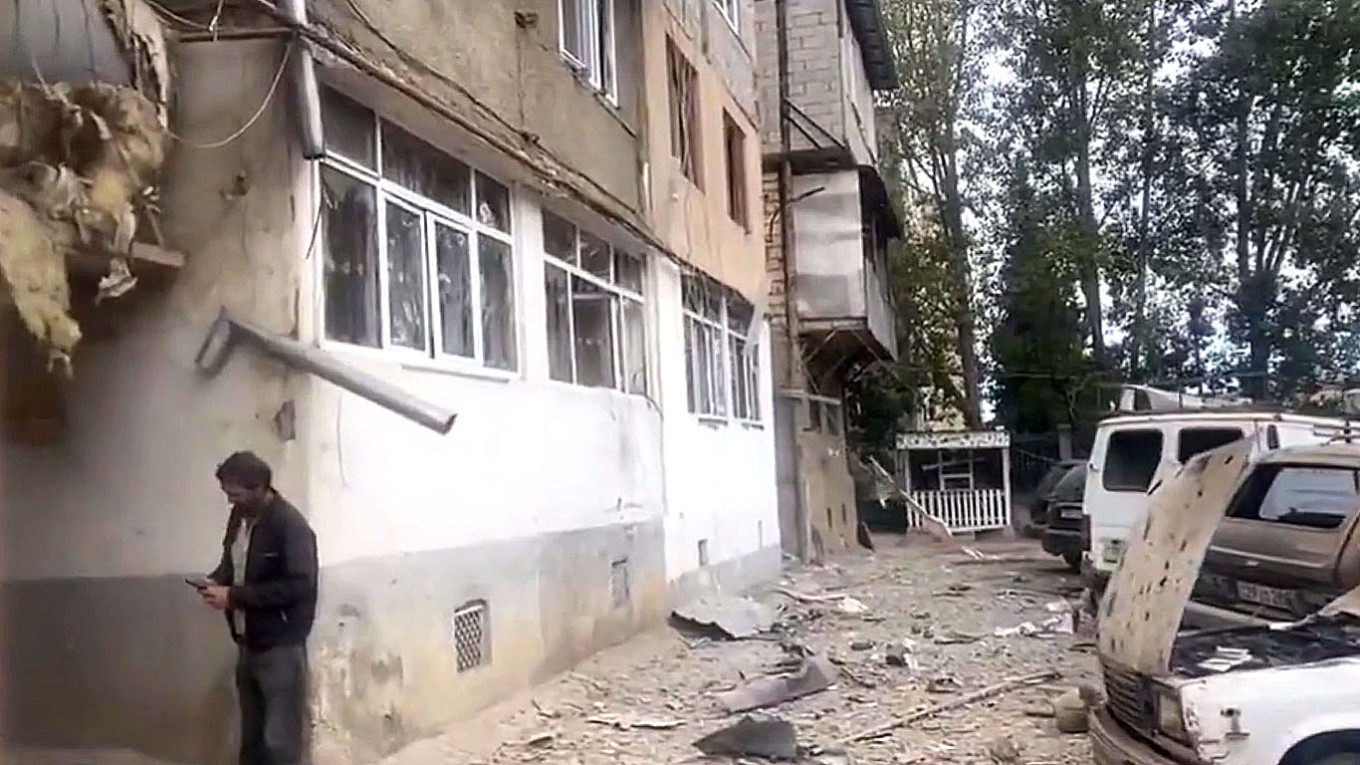Hovhannes Nikoghosyan and Vahram Ter-Matevosyan

For the past few weeks, aerial images and videos have shown that Azerbaijan has been amassing troops along the borders of Nagorno-Karabakh and of Armenia itself. The upside-down letter “A” on Azerbaijani military vehicles — a copycat of the Russian military’s insignia in Ukraine — looks like a threat to cut through Southern Armenia and secure the land corridor into Nakhchivan and to Turkey, which President Ilham Aliyev has been demanding since the end of the 2020 war.
Many international organizations, including the International Committee of the Red Cross (ICRC), and foreign governments have condemned the dire humanitarian catastrophe in this breakaway region in the South Caucasus. Residents have been dying of malnutrition and shortages of medicine.
The ongoing blockade of Nagorno-Karabakh and its 120,000 inhabitants since December 2022, and regular ceasefire violations by Azerbaijan, prompted the former Prosecutor General of the International Criminal Court, Luis Moreno Ocampo, to call this a genocide under the UN’s 1948 Genocide Convention.
A closer look into the situation on the ground makes it clear there is neither room for peace, nor preventing a new war.
Backed by Turkey, Pakistan and Israel, Azerbaijan launched and won an unprovoked war in fall 2020, reclaiming around 10,000 square kilometers of Armenian-controlled territories in and around Nagorno-Karabakh. Since November 2020, the remaining 2,200 square kilometers have been patrolled by local self-defense forces and Russian peacekeepers who lack a broad international mandate and rules of engagement.
Regular skirmishes both on the Line of Contact in Nagorno-Karabakh and along the international border between Armenia and Azerbaijan have become a new normal. Since May 2021, the Armenian government has reported about 150 square kilometers of its internationally-recognized sovereign territory under Azerbaijani occupation.
Incursions by Azerbaijan have barely been held back by unarmed European observers (since October 2022) or Russian peacekeepers.
Since November 2020, the Azerbaijani government and various state-sponsored activists have spoken more systematically about the state of Armenia representing “Western Azerbaijan.” Repatriating Azerbaijani inhabitants of Armenia and questioning the legitimacy of the country’s existence has unofficially been part of Baku’s agenda for some time.
Now Armenia is warned against criticizing Azerbaijan’s xenophobic statements, which it uses for internal propaganda, in order to avoid jeopardising the chances of a peace agreement. Meanwhile Aliyev, encouraged by this idleness of external players, has occupied swaths of Armenian highlands on the border and keeps lowland residents under fire, often literally.
Following Armenia’s snap parliamentary elections in 2021, which saw the election of Prime Minister Nikol Pashinyan, the Armenian government started nurturing a new narrative about a “peace deal” with Azerbaijan. To meet one of Baku's key demands, Pashinyan has even publicly pronounced Nagorno-Karabakh part of Azerbaijan.
This backpedalling created an opportunity for both Russia, as well as the EU and U.S., to try to establish peace in the region. The Armenian leadership, most likely, acted under duress created by the threat of force by Azerbaijan.
No comments:
Post a Comment